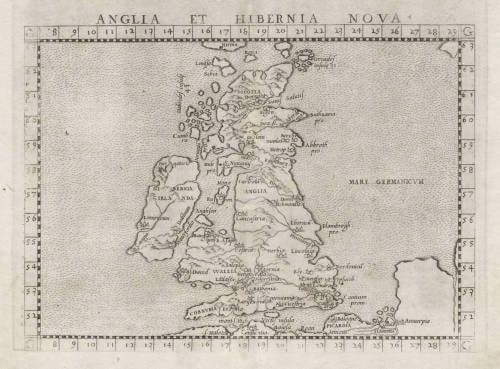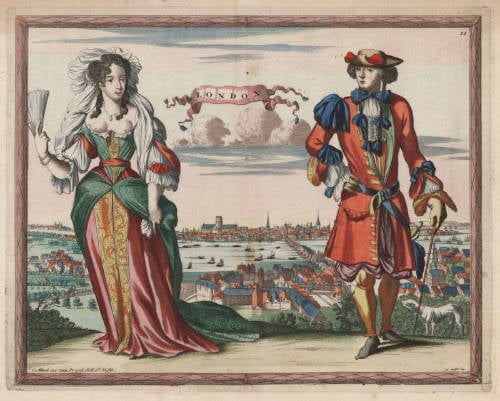Leen Helmink Antique Maps
Antique map of British Isles by Ruscelli
Stock number: 18843
Zoom ImageCartographer(s)
Girolamo Ruscelli (biography)
Title
Anglia et Hibernia Nova
First Published
Venice, 1561
This Edition
1562 first state
Size
18.0 x 25.0 cms
Technique
Condition
excellent
Price
$ 450.00
(Convert price to other currencies)
Description
Ruscelli's modern map of the British Isles. Unlike most maps in his Geographia, it is not based on the 1548 Gastaldi map. A collectors's item.
"The British Isles map from the modern section of the Geographia is based closely on the 1546 Lily map but omits many place names
in this reduced size version. The border contains graduations of latitude and longitude: there is no scale."
(Shirley).
"This elegant copperplate map is apparantly based on the 1546 Lily map but because of the considerably reduced size much detail has been omitted. No scale is given, but latitude and longitude are shown."
(Moreland & Bannister).
Girolamo Ruscelli (1504-1566)
Girolamo Ruscelli (1504 Viterbo -1566 Venice), an Italian Alchemist, Physician and cartographer, was editor of a revised and expanded Italian edition of Ptolemy's 'Geographia', published as 'La Geografia di Claudio Tolomeo. The newly engraved maps were based, generally, on those compiled by Giacomo Gastaldi for the Venice miniature atlas edition of 1548.
Ruscelli's atlas was issued several times between 1561 and 1599 by the following publishers
- Venice, Vincenzo Valgrisi, 1561
- Venice, Vincenzo Valgrisi, 1562
- Venice, G. Zileti, 1564
- Venice, G. Zileti, 1574
- Venice, Heirs of Melchior Sessa, 1598-99
The Ruscelli and Gastaldi atlases were the most comprehensive atlases produced between Martin Waldseemüller's 'Geographia' of 1513, and Abraham Ortelius 'Theatrum' of 1570. The significance of the Gastaldi and Ruscelli atlases cannot be overestimated. They defined the known geography of the world for decades. These atlases also reintroduced the use of copper engraving into the service of cartography, which was dominated by woodcut printing after several not very succesful attempts to print from copper in the 15th century. The Gastaldi and Ruscelli atlases proved that maps could be beautifully engraved on copper. As it was a harder material than wood, it was harder to engrave but also gave the ability to render much more detail. The Gastaldi and Ruscelli atlases marked a turning point in the history of cartography, from then on the majority of cartographic works used this medium.
"Ruscelli was editor of a revised and expanded edition of Ptolemy's Geographia which was issued in Venice several times between 1561 and the end of the century.
The newly angraved maps were based, generally, on those compiled by Giacomo Gastaldi for the Venice edition of 1548."
(Moreland & Bannister).






